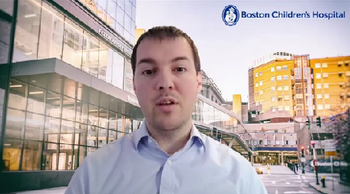
ADHD—or Something Else?
The importance of understanding diagnosis, assessment, and treatment.
Attention-deficit/hyperactivity disorder (
ADHD prevalence in the pediatric population has been stable over the past 30 years except in the United States, where cases have increased.3 According to a 2016 parent survey, approximately 6.1 million (9.4%) children received a diagnosis of ADHD in the United States.4 Worldwide, ADHD is the third most common mental health disorder, following depression and anxiety.5 Overall, girls are less likely to be diagnosed with ADHD than boys.4 A 2021 global systematic review and meta-analysis suggested that the prevalence of persistent adult ADHD was 2.58%, and the prevalence of symptomatic adult ADHD was 6.76%, with 139.84 million and 366.33 million affected adults worldwide in 2020, respectively.6 ADHD appears to impact men more than women. In adults, ADHD decreases as an individual ages.6
The etiology of ADHD is still not clearly understood; however, combinations of genetic, neurological, and environmental factors contribute to the pathogenesis and symptom expression.5 Genetic factors are implicated in ADHD, but the mechanism of action is not completely clear. Family, twin, and adoption studies have strongly suggested that ADHD is highly inheritable. Moreover, genetic studies have documented the gene sets interfering with neurotransmitter pathways in the brain that implicate rare copy number variants or the collection of higher deletions, as well as the duplications impacting gene transcriptions that are more likely to be found in individuals with ADHD.5,7-9
Pre-, peri-, and postnatal environmental factors play a significant role in the development of ADHD. Prenatal factors include the mother’s lifestyle during pregnancy.10 For example, prenatal alcohol exposure can lead to hyperactive, disruptive, and impulsive behaviors and increase the risk of psychiatric disorders.11,12 Maternal smoking during the prenatal developmental period has been linked to increased risk of ADHD13 and hyperactivity.14 Perinatal factors such as very low-birthweight children have a twofold increase in ADHD.15
ADHD is conceptualized as a disorder of childhood that gradually diminishes over the lifespan.10 However, several prospective longitudinal studies have challenged the prevailing assumption that childhood ADHD and adult ADHD affect the same individuals who share the same neurodevelopmental vulnerabilities.16-18 These studies suggest that more than two-thirds of individuals with adult ADHD never had childhood ADHD. Adult ADHD is generally neglected in epidemiological studies, and, until recently, many attempts have been made to estimate the prevalence of ADHD in adults. Further, researchers are exploring whether ADHD is solely a neurodevelopmental disorder that is diagnosed in childhood, or whether ADHD can be acquired during other developmental periods. The prevalence of persistent adult ADHD from childhood and that of symptomatic adult ADHD were 2.58% and 6.76% in 2020, respectively.19
The diagnostic assessment of ADHD can be complicated, as inattention, impulsivity, and difficulties with concentration can be driven by a myriad of factors. It is well-documented that children and adolescents diagnosed with ADHD have a cooccurring disorder.20 It is estimated that 45% children and adolescents with ADHD have a learning disability; 27% have a conduct disorder diagnosis; 18% have an anxiety disorder; and 15% have a depressive disorder.21 According to a study by Elia and colleagues, oppositional defiance disorder was the most common comorbid disorder at 41%, followed by depression/dysthymia at 22% and general anxiety disorder at 15%.21
In adults with ADHD, the most common cooccurring psychiatric disorders are depression, anxiety disorders, bipolar disorder, substance use disorders (SUDs), and personality disorders.22 ADHD has a high cooccurring prevalence with bipolar disorder: Estimates range between 9.5% and 21.2%, with bipolar I disorder being more likely.23 ADHD and depression commonly cooccur at high rates ranging from 18.6% to 53.3%.24 Individuals with ADHD are at higher risk for developing anxiety disorders than the general population with rates approaching 50%.25-27 SUDS are likely the most common cooccurring condition with ADHD—specifically alcohol and/or nicotine, cannabis, and cocaine use.28
Research support for the intersection of ADHD and personality disorders is scant compared to the support of other psychiatric cooccurring conditions. However, reports indicate that personality pathology are present approximately 50% of adults with ADHD—most commonly cluster B and C personality structures—and up to 25% of adults with ADHD have 2 or more personality conditions.29
It is important to differentiate if an individual is presenting with any of the above-mentioned conditions to determine if they have comorbid ADHD. Diagnosing ADHD can be a complicated process that goes beyond a checklist. It is imperative to obtain historical information such as academic performance records and previous psychological testing reports, if ever tested. There are several significant barriers to diagnosis and treatment in ADHD, including overlapping symptomology between ADHD and mood, anxiety, SUDS, learning disabilities, information processing disorders, auditory processing disorders, and psychosocial factors. Another key barrier to the accurate diagnosis of ADHD is that some individuals will be able to overcome their deficits by developing and mastering compensating skills that will likely impact the accuracy of ADHD diagnosis and treatment.
Evidenced-based assessment that includes multi-informant/multimethod methods and evidenced-based assessment measures are well-regarded and arguably gold-standard approaches to the assessment of ADHD. This approach should be guided by current research and include test data to support clinical observations and, ultimately, an accurate ADHD diagnosis.
Treatment considerations should be informed by functional outcomes, which include symptom reduction; improved daily, academic, and occupational functioning; and increased quality of life.30 Efficiency at working or studying, maintaining stable relationships, containing or curbing impulsivity, and being satisfied with life overall are indicators of improved functioning. Moreover, adherence to treatment is key to successful management of ADHD.
The first line of ADHD are pharmacologic treatments, which are divided into stimulants and nonstimulants. Stimulant medications include methylphenidate, mixed amphetamine salts, and lisdexamfetamine dimesylate. Nonstimulants used in ADHD treatment include atomoxetine and alpha-2-adrenergic agonists.
There is a well-established body of evidence highlighting the effectiveness of psychosocial treatments for ADHD in children and adolescents, which include behavioral management interventions (parent training, classroom interventions, and peer-based interventions), training interventions (cognitive training, neurofeedback, and organization), cognitive behavioral therapy (CBT), and physiological treatments (play and other physical activities).31-34 CBT is the preferred nonpharmacological treatment for adult ADHD, which shows consistent reduction in the core behavioral symptoms of ADHD.35
Dr Blassingame is an assistant professor and licensed clinical psychologist at Harris Health System in the Menninger Department of Psychiatry and Behavioral Sciences at Baylor College of Medicine. Dr Buitrago is a psychology fellow at Baylor College of Medicine.
References
1. Faraone SV, Banaschewski T, Coghill D, et al.
2. Gordon CT, Fabiano GA.
3. Polanczyk GV, Willcutt EG, Salum GA, et al.
4. Danielson ML, Bitsko RH, Ghandour RM, et al.
5. Bélanger SA, Andrews D, Gray C, Korczak D.
6. Song P, Zha M, Yang Q, et al.
7. Faraone SV, Mick E.
8. Stergiakouli E, Hamshere M, Holmans P, et al.
9. Williams NM, Franke B, Mick E, et al.
10. Curatolo P, D'Agati E, Moavero R.
11. D'Onofrio BM, Van Hulle CA, Waldman ID, et al.
12. Sen B, Swaminathan S.
13. Milberger S, Biederman J, Faraone SV, et al.
14. Kotimaa AJ, Moilanen I, Taanila A, et al.
15. Taylor E, Rogers JW.
16. Moffitt TE, Houts R, Asherson P, et al.
17. Agnew-Blais JC, Polanczyk GV, Danese A, et al.
18. Caye A, Rocha TB, Anselmi L, et al.
19. Biederman J, Faraone SV.
20. Larson K, Russ SA, Kahn RS, Halfon N.
21. Elia J, Ambrosini P, Berrettini W.
22. Katzman MA, Bilkey TS, Chokka PR, et al.
23. Wingo AP, Ghaemi SN.
24. Torgersen T, Gjervan B, Rasmussen K.
25. Mancini C, Van Ameringen M, Oakman JM, Figueiredo D.
26. Braaten EB, Beiderman J, Monuteaux MC, et al.
27. Kessler RC, Adler L, Barkley R, et al.
28. Klassen LJ, Bilkey TS, Katzman MA, Chokka P.
29. Olsen JL, Reimherr FW, Marchant BK, et al.
30. Rösler M, Ginsberg Y, Arngrim T, et al.
31. Shrestha M, Lautenschleger J, Soares N.
32. Pliszka S; AACAP Work Group on Quality Issues.
33. Evans SW, Owens JS, Bunford N.
34. Pfiffner LJ, Haack LM.
35. Nimmo-Smith V, Merwood A, Hank D, et al.
Newsletter
Receive trusted psychiatric news, expert analysis, and clinical insights — subscribe today to support your practice and your patients.

















